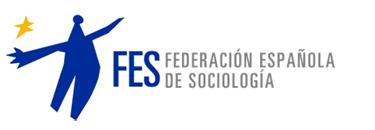Oportunidades y retos de la cultura maker para la digitalización de la sociedad española
DOI:
https://doi.org/10.24197/st.2.2022.206-227Palabras clave:
digitalización responsable, estudios de innovación, espacios maker, culturas digitales, makersResumen
La popularización de la "cultura maker" ha facilitado la aparición de diversos espacios a nivel mundial que facilitan la difusión de conocimientos y habilidades asociados a tecnologías emergentes. Este artículo hace un repaso de su surgimiento, con especial énfasis en el territorio español. Enfocándonos en dos casos de institucionalización (Ikaslab Sarea y Xarxa d´Ateneus de Fabricació), analizamos las oportunidades y desafíos que presentan estos espacios para el empoderamiento ciudadano. Argumentamos que la institucionalización de estos espacios debe alejarse de enfoques tecnocentristas y apostar por un modelo basado en el desarrollo de habilidades, valores y experiencias que contribuyan a una digitalización responsable.
Descargas
Referencias
Autor/a (2016)
Autor/a (2018)
Autor/a (2019)
Autor/a (2022)
Anderson, C. (2012). Makers: the new industrial revolution. Random House.
Atkinson, P. (2006). Do It Yourself: Democracy and Design. Journal of Design History, 19(1), 1–10. https://doi.org/10.1093/jdh/epk001
Benkler, Y. (2006). The Wealth of Networks: How Social Production Transforms Markets and Freedom. Yale University Press.
Blok, V., & Lemmens, P. (2015). The Emerging Concept of Responsible Innovation. Three Reasons Why It Is Questionable and Calls for a Radical Transformation of the Concept of Innovation. In B.-J. Koops, I. Oosterlaken, H. Romijn, T. Swierstra, & J. van den Hoven (Eds.), Responsible Innovation 2: Concepts, Approaches, and Applications (pp. 19–35). Springer. https://doi.org/10.1007/978-3-319-17308-5
Buechley, L., & Hill, B. M. (2010). LilyPad in the wild: how hardware’s long tail is supporting new engineering and design communities. DIS ’10 Proceedings of the 8th ACM Conference on Designing Interactive Systems, 199–207. https://doi.org/10.1145/1858171.1858206
Burke, L. M., & McNeill, J. B. (2011). “Educate to innovate”: How the Obama plan for STEM education falls short. In Backgrounder (Issue 2504). http://report.heritage.org/bg2504
Cavalcanti, G. (2013). Is it a Hackerspace, Makerspace, TechShop, or FabLab? Make. https://makezine.com/2013/05/22/the-difference-between-hackerspaces-makerspaces-techshops-and-fablabs/
Corona-Rodríguez, J.-M. (2018). De la alfabetización a los alfabetismos : aprendizaje y participación DIY de Fans y Makers mexicanos. Comunicación y Sociedad, 33, 139–169.
Corsini, L., Aranda-Jan, C. B., & Moultrie, J. (2019). Using digital fabrication tools to provide humanitarian and development aid in low-resource settings. Technology in Society, 58(February), 101117. https://doi.org/10.1016/j.techsoc.2019.02.003
Corsini, L., Dammicco, V., & Moultrie, J. (2021). Frugal innovation in a crisis: the digital fabrication maker response to COVID-19. R and D Management, 51(2), 195–210. https://doi.org/10.1111/radm.12446
Diaz, J., Tomàs, M., & Lefebvre, S. (2021). Are public makerspaces a means to empowering citizens? The case of Ateneus de Fabricació in Barcelona. Telematics and Informatics, 59. https://doi.org/10.1016/j.tele.2020.101551
Dougherty, D. (2012). The Maker Movement. Innovations: Technology, Governance, Globalization, 7(3), 11–14. https://doi.org/10.1162/INOV_a_00135
Elena García-Ruiz, M., & Lena-Acebo, F. J. (2019). Fablab movement: Research design by mixed methods. OBETS, 14(2), 373–406. https://doi.org/10.14198/OBETS2019.14.2.04
García-Sáez, C. (2016). Orígenes de la red española de fab labs. Experimenta, 72.
Halverson, E. R., & Sheridan, K. (2014). The Maker Movement in Education. Harvard Educational Review, 84(4), 495–504. https://doi.org/10.17763/haer.84.4.34j1g68140382063
Haring, K. (2008). Ham Radio´s Technical Culture. The MIT Press.
Himanen, P. (2002). La ética del hacker y el espíritu de la era de la información. Destino.
Irie, N. R., Hsu, Y. C., & Ching, Y. H. (2018). Makerspaces in Diverse Places: A Comparative Analysis of Distinctive National Discourses Surrounding the Maker Movement and Education in Four Countries. TechTrends. https://doi.org/10.1007/s11528-018-0355-9
Kuznetsov, S., & Paulos, E. (2010). Rise of the Expert Amateur : DIY Projects , Communities , and Cultures. Proceedings of the 6th Nordic Conference on Human-Computer Interaction: Extending Boundaries, 295–304.
Levy, S. (2010). Hackers: Heroes of the Computer Revolution. In O’Reilly. Dell Publishing. https://doi.org/10.1016/0267-3649(86)90036-1
Lindtner, S. (2015). Hacking with Chinese Characteristics: The Promises of the Maker Movement against China’s Manufacturing Culture. Science, Technology & Human Values, 40(5), 1–26. https://doi.org/10.1177/0162243915590861
Lindtner, S., & Li, D. (2012). Created in China: The Makings of China’s Hackerspace Community. Interactions, 19, 18–22. https://doi.org/10.1145/2377783.2377789
Martínez Toran, M. (2016). Open Design y Makerspaces en España. Experimenta, 72.
Morozov, E. (2014). Making It. The New Yorker. http://www.newyorker.com/magazine/2014/01/13/making-it-2
Niaros, V., Kostakis, V., & Drechsler, W. (2017). Making (in) the Smart City: The Emergence of Makerspaces. Telematics and Informatics. https://doi.org/10.1016/j.tele.2017.05.004
Ramella, F., & Manzo, C. (2018). Into the crisis: Fab Labs – a European story. The Sociological Review, 66(2), 341–364. https://doi.org/10.1177/0038026118758535
Rayna, T., & Striukova, L. (2021). Fostering skills for the 21st century: The role of Fab labs and makerspaces. Technological Forecasting and Social Change, 164. https://doi.org/10.1016/j.techfore.2020.120391
Romero-Frías, E., & Robinson-García, N. (2017). Laboratorios sociales en Universidades: Innovación e impacto en Medialab UGR. Comunicar, 51(XXV), 29–38. https://doi.org/https://doi.org/10.3916/C51-2017-03 |
Rosa, P., Ferretti, F., Guimarães Pereira, Â., Panella, F., & Wanner, M. (2017). Overview of the Maker Movement in the European Union (Issue December). https://doi.org/10.2760/227356
Ryan, G. W., & Bernard, H. R. (2003). Techniques to Identify Themes. Field Methods, 15(1), 85–109. https://doi.org/10.1177/1525822X02239569
Silverman, D. (2006). Qualitative Research. Theory, Method and Practice (2nd ed.). SAGE Publications.
Sivek, S. C. (2011). “We Need a Showing of All Hands”: Technological Utopianism in MAKE Magazine. Journal of Communication Inquiry, 35, 187–209. https://doi.org/10.1177/0196859911410317
Smith, A., Fressoli, M., Abrol, D., Arond, E., & Ely, A. (2017). Grassroots Innovation Movements. Routledge.
Vuorikari, R., Ferrari, A., & Punie, Y. (2019). Makerspaces for Education and Training. https://doi.org/10.2760/946996
Whelan, T. (2018). We Are Not All Makers : The Paradox of Plurality In The Maker Movement. Proceedings of the 2018 ACM Conference Companion Publication on Designing Interactive Systems, 75–80. https://doi.org/10.1145/3197391.3205451
Descargas
Publicado
Número
Sección
Licencia
Derechos de autor 2022 Raúl Tabarés, Tatiana Bartolome Campino, Jorge García Valbuena

Esta obra está bajo una licencia internacional Creative Commons Atribución-NoComercial 4.0.
Todos los trabajos publicados en la revista Sociología y Tecnociencia se distribuyen bajo una Licencia Creative Commons Atribución 4.0 Internacional (CC BY 4.0).
Los autores continúan como propietarios de sus trabajos, y pueden volver a publicar sus artículos en otro medio sin tener que solicitar autorización, siempre y cuando indiquen que el trabajo fue publicado originariamente en la revista Sociología y Tecnociencia.


